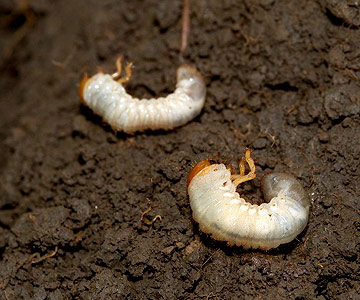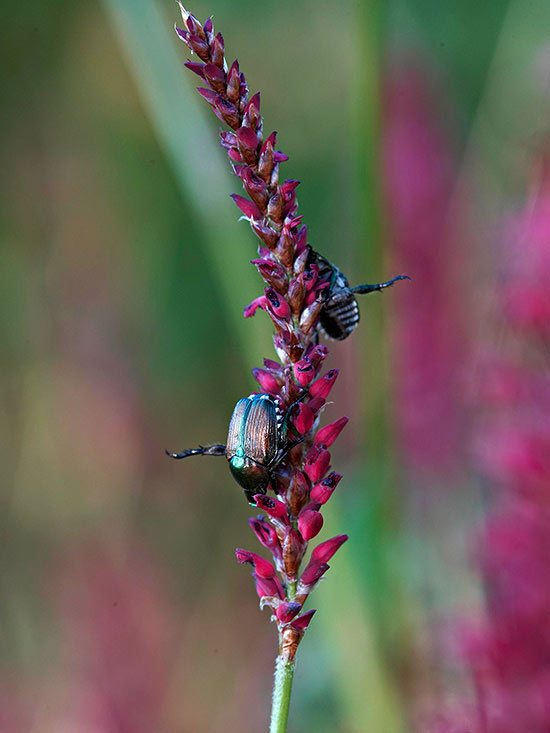





If your grass turns brown and pulls up easily in July and August, or if you notice a lot of critters such as skunks or raccoons tearing up your lawn, your grass may be infested with grubs. White grubs are the larvae of Japanese beetles, June beetles, or masked chafer beetles. They cause damage to lawns by feeding on the roots of grass.
continue reading below
Grubs are milky white with a brownish head. They typically curl into a "C" shape when disturbed. Depending on species they may have a 1-year or a 3-year life cycle. Annual white grubs (larvae of masked chafer beetles or Japanese beetles) begin their life cycle in mid- to late summer, grow quickly, and do most of their feeding in late summer. Larvae of June beetles take 3 years to complete their life cycle, so damage from them may appear in lawns in spring, summer, or fall.
Moles can be a troublesome yard pest, too. Click here to learn how to stop them.
Controls are most effective on immature grubs. For most species and locations that means July or August is the prime time to treat with an insecticide. However, because grub populations vary from year to year, you may be able to save the cost of treatment if you first sample your lawn to estimate how many grubs are present. Dig up several pieces of sod about a foot square. If you find five or fewer grubs per square foot, you need not apply grub control. The lawn will withstand the amount of feeding these few grubs do. If 10 or more grubs are present, treat your lawn for grubs. If the average count is between five and 10, whether or not to control depends on the health of your lawn, your tolerance for damage to the lawn, and presence of natural controls.

Milky spore is a natural bacterium that can be an effective control of Japanese beetle grubs, but it usually takes several years for it to become established in the soil. And it requires some grubs in the soil to live on, so don't use it in combination with chemical grub controls. Milky spore is ineffective on other types of grubs.
Beneficial nematodes are microscopic worms that live in the soil. They seek out grubs, and after entering their bodies, release bacteria that kill the grubs. The two major types of insect parasitic nematodes are Steinernema spp. and Heterorhabditis spp. The nematodes are applied as a live product, so make certain if you use them that they have been handled carefully to keep them alive, and that their shelf life has not expired. These nematodes are effective on all types of grubs in the soil.
Weather and irrigation practices can work in your favor to control grubs, too. Grub populations are usually highest when soil conditions are consistently moist. In dry years or if you withhold irrigation water during hot summer months, many grubs will not survive. This strategy may work well for bluegrass lawns that recover well from summer dormancy.
Apply curative chemical grub controls at the correct time, when grubs are small and actively feeding near the soil surface. This is usually from early July until mid-August. Chemicals labeled for curative control are carbaryl, halofenozide, and imidacloprid.
Because grub populations vary so much from year to year, preventative chemical controls are seldom justified. But if your lawn has been attacked by grubs consistently, a preventative insecticide application in late May or June may be warranted. imidacloprid and halofenozide provide extended, preventative grub control.
Water in chemical controls to move the chemical into the soil where it can act on the grubs. Watering the lawn after chemical application not only moves the product down to the thatch layer, it also stimulates the grubs to move upward in the soil, closer to the chemical.
Learn more about how to control Japanese Beetles.
Copyright © www.100flowers.win Botanic Garden All Rights Reserved